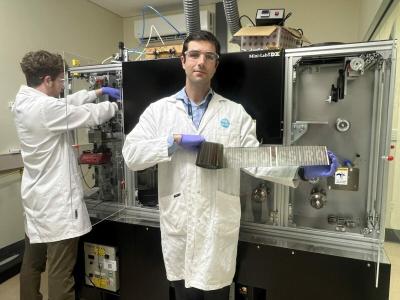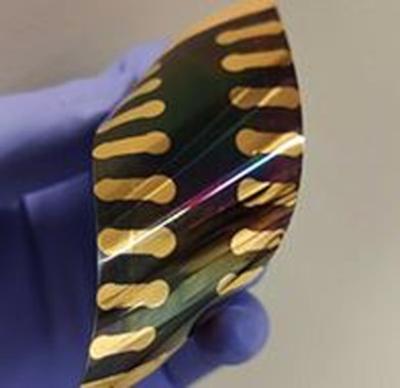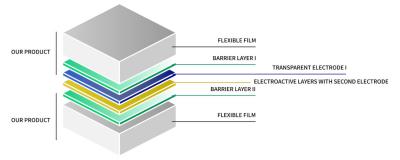Researchers use CIP method to create carbon electrode-based perovskite solar cells with 20.8% efficiency
Researchers from Australia's Monash University and CSIRO Manufacturing have reported a lamination technique, known as cold isostatic pressing (CIP), to build a perovskite solar cell based on a flexible bilayer electrode made of carbon and silver. The resulting electrode can reportedly compete with gold-carbon electrode based counterparts in terms of efficiency and stability.
The back side of a C-PSC with a custom-designed electrode after CIP processing. Image credit: Communications Materials
The researchers, led by CSIRO Manufacturing, which is part of Australia's Commonwealth Scientific and Industrial Research Organization (CSIRO), explained that while perovskite solar cells (PSCs) with evaporated gold (Au) electrodes have shown promising efficiencies, the maturity of the technology still demands low-cost and scalable alternatives to progress towards commercialization. Carbon electrode-based PSCs (C-PSCs) represent a promising alternative, however, optimizing the interface between the hole transport layer (HTL) and the carbon electrode without damaging the underlying functional layers is a persistent challenge, which the team set out to address.







